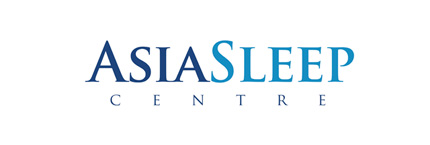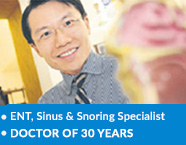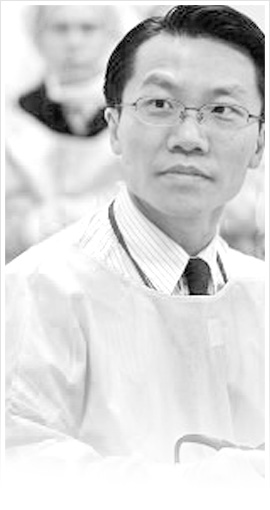Snoring, Sinus & ENT Specialist
- Dr Kenny Peter Pang
- Ear, Nose & Throat Consultant
- Otorhinolaryngologist
- MBBS MRCS(Edinburgh)(UK)
- FRCS(Edinburgh)(UK)
- FRCS(Ireland)(OTO)
- Masters Medicine (ORL)
- Founder, ASEAN Sleep Surgical Society
- Founding Member, International Surgical Sleep Society
- Member, American Academy Sleep Medicine
- Member, Singapore Sleep Society
- Member, World Sleep Society
- Board Member, Italian Sleep Disorders Board
- Member, British Association of Sleep Surgeons
- Member, European Academy of Sleep Medicine
What is Snoring?
Snoring is defined as noisy breathing during sleep. It is caused by vibrations of the soft palate, uvula, base of tongue and other soft tissues in the throat when one inhales. It implies an increased resistance to the inflow of air during breathing at the level of the upper airways. As much as 50% to 60% of the male adult population, between the ages of 30 - 60 years, snores.
Is Snoring a problem?
Snoring is a social nuisance. However, it can be a potential problem, especially if it disturbs the bed partner.It can lead to marital problems, irritation and anger at home.
If a patient who snores has symptoms of tiredness, poor concentration, daytime sleepiness, choking sensations at night, this patient may have a serious medical problem called Obstructive Sleep Apnoea (OSA).
What is Obstructive Sleep Apnoea (OSA)?
OSA is a disorder that is characterised by repetitive collapse of the airway, resulting in low oxygen levels and an elevated blood pressure.
Apnoea is defined as an absence or stoppage in breathing for 10 seconds or longer.
Patients with severe OSA, may stop breathing as often as once every minute, over the entire night's rest.
Diagnosis of OSA requires a thorough clinical examination and a flexible naso-endoscopy. A non-invasive painless sleep assessment is also strongly recommended.
Symptoms of OSA
During the day:
- Daytime sleepiness / tiredness
- Poor concentration
- Poor memory
- Morning headaches
- Mood changes
- Irritability
During the night:
- Choking sensation
- Gasping for air during sleep
- Frequent arousals
- Nocturia (frequent passing urine)
- Loud snoring
Diseases associated with OSA
- Obesity
- Hypertension
- Ischaemic Heart Disease
- Stroke (Cerebrovascular Accidents)
- Diabetes Mellitus
Paediatric Snoring / OSA
Children who snore at night may be suspected of OSA. These children may have nose block or narrow air passages due to big tonsils and adenoids. Children with OSA have insufficient oxygen at night. Hence, they are prone to behavioural disorders, short attention spans, and poorer school performances.
Treatment of OSA in children can be curative.
Treatment Of OSA
Conservative Measures
- Weight loss
- Sleep on the side
- Stop smoking
- Avoid being sleep deprived
- Avoid alcohol, sedatives
- Regular exercise
Medical Treatment
Continuous Positive Airway Pressure (CPAP)
This is a non-invasive method of treatment that requires the use of continuous positive airway pressure by a nasal mask worn by the patient throughout the night. CPAP is an effective treatment for OSA, however, compliance is an issue.
Oral Appliances (OA)
These are mouthpieces that are worn while sleeping to prevent the airway from collapsing. It works by repositioning the tongue or mandible forward.
Snoring Treatment
Snoring Surgical treatment has been shown to be effective and curative in certain subsets of patients. Surgery ranges from the use of laser techniques, palatal implants to reduction of the soft palatal tissue, minimally invasive tongue surgery and jaw advancement.
Surgical options:
- Uvulopalatopharyngoplasty
- Laser assisted uvuloplasty
- Nasal submucous diathermy
- Palatal advancement
- Tongue base reduction
- Genioglossus advancement
- Nose surgery - Septoplasty, Turbinate Reduction, Turbinoplasty, Radiofrequency, Endoscopic Sinus Surgery, Balloon Sinuplasty
- Palate Surgery - Uvulopalatopharyngoplasty, Fairbank's UPPP, Pang's Expansion pharyngoplasty, Laser assisted palatoplasty, Anterior Palatoplasty, Pillow Implants
- Tonsil surgery - Tonsil Removal, Tonsil Reduction
- Tongue Surgery - Tongue Reduction, Coblation, Laser, Radiofrequency, Tongue Suspension
- Jaw Surgery - Jaw Surgery Advancement






